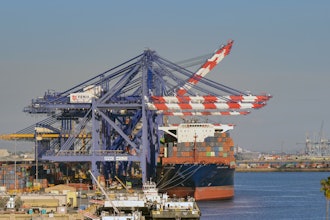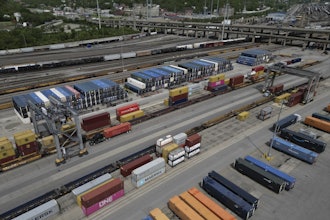
As we move further into 2025, the logistics industry between the United States and Canada continues to navigate a landscape shaped by ongoing economic shifts, regulatory changes, and the long-term impacts of global disruptions over the past several years.
The sector faces a mix of challenges and promising opportunities, requiring logistics professionals to adapt to evolving demands. Inflation, shifting trade policies, and the increasing complexity of supply chains are pressing concerns, but advancements in technology, infrastructure investments, and growing e-commerce present new avenues for growth.
While recent technological advancements, like autonomous delivery vehicles and warehouse robotics, have created some breathing room for logistics providers, they are not without flaws and disruptions that can pose new risks. To stay adaptable, it is crucial to keep an eye on these challenges alongside emerging opportunities that could transform the logistics landscape.
Opportunities for U.S.-Canada Logistics in 2025
This year presents lots of promising solutions and opportunities in the industry. Technology, trade and infrastructure are all key shipping areas that benefit from recent advancements, helping to improve shipping processes.
Technological Advancements
Despite wariness to change and security concerns, technological advancements have simplified many areas of logistics. The integration of AI and machine learning has allowed for predictive analytics across a range of functionalities. Automated warehousing solutions have also improved the picking and packing process, boosting efficiency while minimizing errors.
Using the blockchain for secure and transparent transactions has also increased customer safety and satisfaction, allowing individuals to track their shipments and understand real-time comprehensive updates.
The Internet of Things (IoT) and other smart logistics solutions allow logistics managers to access current information on inventory, vehicles, deliveries and more without stepping into a warehouse. As a result, larger-scale operations can be managed more effectively.
Trade Agreements and Partnerships
Partnerships between governments and private companies have been vital in developing new trade agreements and enhancing existing ones, making cross-border logistics even smoother and more efficient. These collaborations help reduce barriers, standardize regulations, and promote mutual economic growth.
The most monumental free-trade agreement between the U.S. and Canada is the Canada-US-Mexico Agreement (CUSMA), which facilitates the daily movement of billions of dollars worth of goods and services. Alongside this is U.S. legislation, commonly called Section 321, which eliminated import duties and tariffs for goods worth $800 USD entering the United States from Canadian warehouses. This further expands the options for warehousing and fulfillment for businesses operating in North America and elsewhere as it removes barriers for small package shipments. Section 321 is still in place, but recent changes suggest it’s being tightened up. For businesses that rely on this rule, it’s more important than ever to keep an eye on evolving regulations and adjust your supply chain strategies to stay ahead.
Infrastructure Investments
In recent years, significant investments by local governments and private entities in new infrastructure projects have been implemented to support and enhance logistics operations. These investments are crucial for addressing current challenges and preparing for future demands in cross-border shipping between the U.S. and Canada.
These projects aim to create more efficient and resilient logistics networks. This includes building new logistics hubs, modernizing ports and terminals, smart infrastructure, and creating better shipping corridors.
E-commerce Growth
The continued surge in e-commerce, fueled by consumer demand for convenience and variety, presents a major growth opportunity for cross-border logistics. Businesses increasingly seek to tap into international markets, requiring efficient and scalable solutions for fulfillment and last-mile delivery. Companies investing in strong logistics networks and adopting innovative technologies are well-positioned to capitalize on this trend.
Challenges Facing U.S.-Canada Logistics in 2025
The last few years have had a massive impact on the global landscape in all industries, presenting ongoing and new challenges for cross-border logistics in 2025. The economy, regulatory bodies, infrastructure, and developing technology are just some challenges we can expect to face in logistics as we move forward this year.
Economic Uncertainty
Both nations are grappling with economic challenges from inflation, volatile currency exchange rates, and a cautious approach to global trade. For Canada, the potential implementation of a 25% tariff on goods is a significant concern. If enacted, this could push Canada into one of its most severe recessions since the Great Depression of the 1930s. The threat of such measures creates hesitancy among businesses, as higher operational costs could stifle cross-border investments, disrupt supply chains, and force price increases on consumers. These economic pressures demand heightened adaptability from logistics providers to mitigate risk and maintain efficiency.
Regulatory and Compliance Issues
Complex customs regulations and shifts in trade policies have added layers of difficulty to cross-border logistics. Stricter enforcement of tariffs and increased scrutiny at border checkpoints have contributed to delays and higher compliance costs. Businesses must navigate these regulations carefully to avoid fines, penalties, or supply chain disruptions. Legislative uncertainties, including the potential for new tariffs, exacerbate these challenges, forcing companies to remain agile and vigilant in their planning.
The imposition of new tariffs has increased the cost of goods traded between the two countries, causing companies to reassess the financial viability of their cross-border operations. These tariffs can lead to higher consumer prices and lower business profit margins, discouraging some from engaging in international trade altogether.
Infrastructure Constraints
Changes in infrastructure, such as the need for further maintenance and upgrading, have changed major shipping routes in recent years. Bridge collapses, such as the one in Baltimore in 2024, have projected millions in lost revenue, and the effects are anticipated to be felt for the next decade at the state level. Other constraints, such as road and port closure,s can increase shipping costs due to increased gas expenses and the need to take toll roads when a free option previously existed. However, they can also create bottlenecks at popular border crossings, adding time to the shipping process. Additionally, threats of border and port shutdowns have made trade paths seemingly less accessible, making companies wary of relying on cross-border business of any type.
Technological Disruptions
While technology can provide many exciting opportunities, many of these are often met with roadblocks to the logistics landscape. Cybersecurity threats and data breaches have caused problems in companies looking to work with international clients, as crossing borders can increase the risk of certain threats and put you at risk of non-compliance with data safety regulations. An overreliance on technology, in general, has also disrupted trade operations, as is felt by the recent global technology outage that grounded flights and backed up border crossings when a faulty software update was sent out.
Navigating The Future Of Cross-Border Logistics
In 2025, the U.S.-Canada logistics industry faces significant hurdles, including economic uncertainty, potential 25% tariffs, and evolving regulatory challenges. The shifting political landscape only heightens the need for agility and resilience. To stay ahead, businesses must prioritize strategies that minimize disruptions and maintain operational efficiency.
Despite the obstacles, companies that embrace adaptability and innovation will find opportunities to thrive in this ever-changing environment.
Jesse Mitchell is the director of business development at Strader-Ferris International, a Canadian & U.S. customs brokerage, cross-border logistics and warehousing company.






















